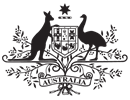THE HON MARK DREYFUS KC MP
ATTORNEY-GENERAL
CABINET SECRETARY
MEMBER FOR ISAACS
OPINION PIECE
Symbolic language will not do anything to turn things around for Indigenous Australians
On Monday, Malcolm McCusker argued in these pages that there were 15 “unanswered questions” about the proposal to enshrine an Aboriginal and Torres Strait Islander Voice.
The first thing to say is that I have a lot of respect for Mr McCusker. And, I welcome the fact that he, and many other Australians, are asking questions — because I am confident that the more Australians learn about the Voice and the proposed constitutional amendment, the more likely they are to vote Yes.
The second thing to say is that all of Mr McCusker’s questions have been answered many times.
But before I get to Mr McCusker’s questions, it is important to say something about the Australian Constitution.
The Australian Constitution sets out some fundamental principles in relation to Australia’s system of government and then leaves it for the Parliament to write the laws about exactly how it will work.
So, for example, the Constitution says that Australia will have elections — but then it is the Parliament that writes the laws about how we hold those elections. The Constitution doesn’t say where polling booths go or how the vote will be counted. It does not even say that Australia will have compulsory voting. All of those matters are left to the Parliament.
Consistent with the rest of the Constitution, the proposed Voice amendment would provide the broad outline of the Voice and leave it to the Parliament to legislate for what it looks like and how it works.
It is against that background that I turn to Mr McCusker’s questions — questions like who will be eligible to serve on the Voice, how its members will be appointed and how the Voice will interact with the closing the gap process.
The short answer to all of those questions is provided in the proposed constitutional amendment itself: it will be up to the democratically-elected Parliament to make laws about what the Voice looks like and how the Voice is to operate, in the same way that the Parliament makes laws about a range of other bodies and subject matters.
This is a really critical point because it means that, even after the Voice is established, if something is not working or could work better, the democratically-elected Parliament would always have the power to change it.
That said, I understand why many Australians want more information about what the Voice will look like, and how it will operate before the Parliament commences its work after referendum day.
This is why, following consultation with Aboriginal and Torres Strait Islander leaders from across Australia, the Government has outlined a number of design principles for the Voice, including:
- The Voice would be a committee of Aboriginal and Torres Strait Islander people who give advice to the Parliament and Government on issues affecting their communities;
- The Voice would include Indigenous Australians from every state and territory, the Torres Strait Islands and representatives from the regions and remote communities;
- Members of the Voice would be chosen by Indigenous Australians in their local areas and serve for a fixed period.
Further information about the design principles for the Voice is readily accessible at voice.gov.au and other websites.
There is nothing “risky” about this proposal. No Australian would or could be worse off if the Yes vote succeeds. To the contrary, Australians, and particularly Aboriginal and Torres Strait Islander Australians, would be better off.
And that is because the Voice will improve the way we develop laws and policies relating to Aboriginal and Torres Strait Islander people because it will give local communities across Australia a voice to Canberra.
We all know that the current approach is not working. And we cannot risk more of the same.
The gaps between Indigenous and non-Indigenous Australians are not closing — in health, in education, in housing and in just about every other measure of quality of life.
There is an eight-year gap in life expectancy.
The suicide rate for Indigenous Australians is twice as high as the rate for non-Indigenous Australians.
Rates of disease and infant mortality are higher for Aboriginal and Torres Strait Islander people.
The list goes on and on.
A Liberal prime minister and a Labor opposition leader established the Referendum Council in 2015 to tell us how Aboriginal and Torres Strait Islander people should be recognised in the Constitution.
After a comprehensive process of consultation with Aboriginal and Torres Strait Islander people right across Australia, the Referendum Council provided its answer in 2017: there should be an Aboriginal and Torres Strait Islander Voice. This was, and is, how Aboriginal and Torres Strait Islander people want to be recognised in the Constitution.
After years of failed programs and policies, Aboriginal and Torres Strait Islander Australians are not seeking a purely symbolic form of constitutional recognition. Symbolic language will not do anything to turn things around. What is needed is a practical form of constitutional recognition.
What is needed is an Aboriginal and Torres Strait Islander Voice.
Wednesday, 13 September 2023
This Opinion Piece appeared in The West Australian



